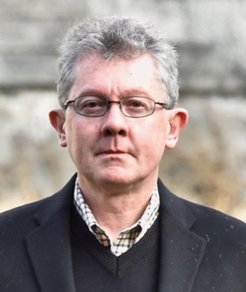Professor Séamus Davis awarded the Buckley Prize
We offer our warm congratulations to our Max Planck Fellow Professor J.C. Séamus Davis of the University of Oxford and University College Cork, who has been awarded the prestigious 2023 Oliver E. Buckley Prize of the American Physical Society.
The prize recognises outstanding theoretical or experimental contributions to condensed matter physics and Professor Davis is awarded the prize for his innovative applications of scanning tunnelling microscopy and spectroscopy to complex quantum states of matter. The award is shared with Prof. Ali Yazdani of Princeton University.

After developing his first ‘quantum microscope’, Davis introduced new techniques for visualization of electronic symmetry breaking, discovering unprecedented states of quantum matter including the density wave phase and the electronic nematic phase of cuprate superconductors, and the famous electronic nematic phase of iron-based superconductors. He demonstrated how to visualize and use quantum interference of electrons scattering from impurity atoms as a technique to determine the momentum-space electronic structure of quantum materials. This procedure was dubbed quasiparticle interference imaging (QPI) and is now used throughout the physics world. Most recently, Davis developed a scanned Josephson tunneling microscope (SJTM) allowing his group to produce probably the first real-space image of the electron-pair density wave (PDW) state – a crystalline state of electron pairs first predicted in 1964.
The main thrust of Davis’ collaboration with our Institute, on a Max Planck Fellowship associated with the Max Planck Graduate Center for Quantum Materials, is the development of another new class of microscope in which micro-coils coupled to superconducting quantum interference devices (SQUIDs) will yield high bandwidth, spatially resolved information on the characteristic noise spectrum of quantum materials. Such data will in turn yield important information on the microscopic interactions and collective quantum states within the materials of interest.












